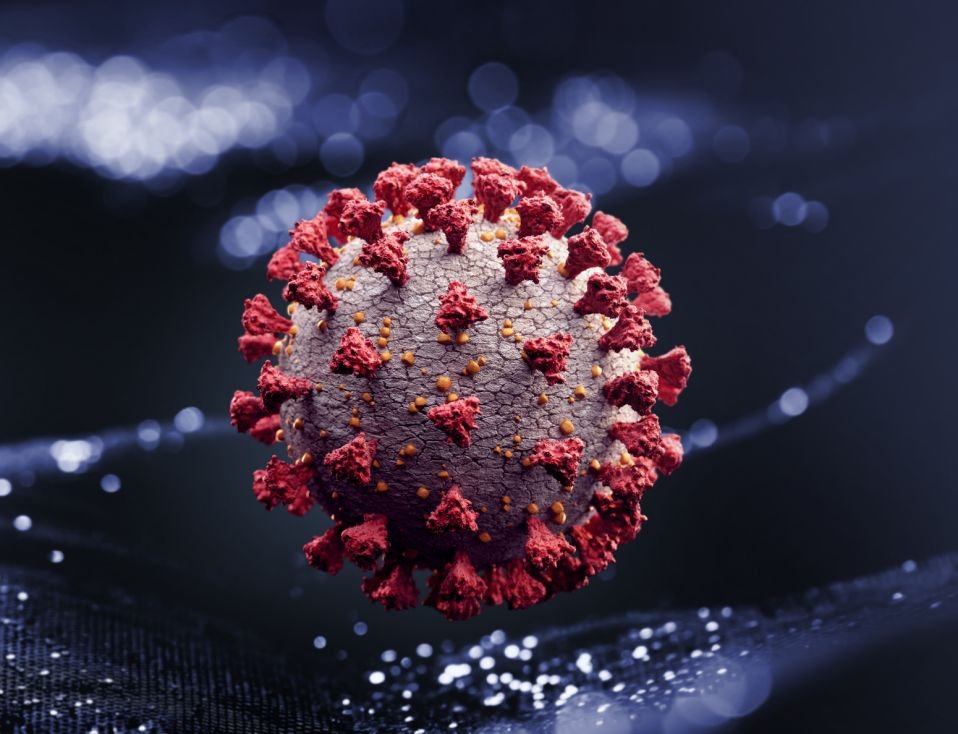Experts say that there is increasing evidence that COVID-19 is not just a lung disease, but can also cause dangerous blood clots, which require immediate blood clotting to protect organs. .

Global studies have shown that the prevalence of blood clotting known as deep vein thrombosis (DVT) is 14–28 percent in hospitalized COVID-19 patients and is 2–5 percent lower for arterial thrombosis.
Coronavirus, the virus that causes respiratory infections
The experience of India is also similar, experts said that this tension is as much about blood vessels as it is about lungs.
“On an average, we are dealing with five-six such cases per week. This week has been a day of such complications, ”Dr. Vascular and Endovascular Surgeon at Sir Ganga Ram Hospital, Delhi. Ambareesh Satwik said.
The prevalence of blood clotting in COVID-19 is higher in patients with conditions such as type-2 diabetes mellitus, although the exact incidence is unknown, Drs. Amrish Kumar, Consultant, Cardio-Thoracic Vocal Department, Akash Healthcare, Dwarka, South West Delhi.
While DVT is a serious condition that occurs when a blood clot forms in a vein located inside the body, arterial thrombosis is a clot that develops in an artery. Arteries are blood vessels that carry oxygen-rich blood from the heart to the body, while veins carry oxygen back from the body to the heart.
Satvik drew attention to the Covid-Clot connection earlier this week in a tweet in which he posted a picture of a blood clot obtained from a lower limb arteries of a COVID-19 patient.
“Does COVID show clots. Covid produces blood clots. The incidence of heart attack, stroke, or organ loss due to arterial clotting in covids varies from 2 percent – 5 percent. We ejected them from the arteries of the lower limb of a Covid patient. We were able to save Satvik on 5 May.
Describing his tweet, which attracted a lot of attention and also questions, Satvi said that the COVID-19 patient had acute erosion due to clots, and was in danger of limb.
“So we had to physically do a surgical procedure and remove these clots, otherwise there could be gangrene, and that would have ended with an amputation. We were able to successfully eject the clot and save the limb,” The surgeon explained.
The authors of a Lancet paper published in November last year said the study suggested an increased risk of COVID-19 and thromboembolism (TE) or blockage of the blood vessel by blood clots.
The authors of the paper concluded that TE rates of COVID-19 are higher and are associated with a higher risk of death.
“We have been understanding the pathophysiology of COVID-19 for the last one year. When it first arrived in China and the global West, it was thought to be specific viral pneumonia. Severe cases of acute COVID were being labeled similar to acute respiratory distress syndrome (ARDS), which leads to respiratory failure, ”said Satvik.
However, a series of autopsies on COVID patients and their lungs revealed that what the doctors were seeing was not normal ARDS.
“In addition, they were found to be clotting in the microcirculation of the lungs. It was then understood that COVID is as much a disease of the blood vessels as it is a disease of the lungs. “
Kumar stated that in a COVID-19 patient, when blood vessels are injured, they form a protein that attracts platelets and other clotting factors that come together to form a clot.
“Studies have shown that about 20 to 30 percent of patients with hospitalized COVID-19 have developed this complication,” he told PTI.
Because there are blood vessels everywhere in the body, these clots can form anywhere. Some of these clots occupy large blood vessels and become macroscopic blood clots.
“But otherwise we are seeing micro-clots diffusing in microcirculation in different organs,” he said.
According to a University of Oxford study published in April, the risk of coagulation of rare blood clots after COVID-19 is almost 100 times higher than normal.
Research found that a rare blood clot known as cerebral venous thrombosis (CVT) – the cerebral vein blood clot in the brain – is more common after COVID-19 than any of these comparison groups , 30 percent of these cases occurring in the 30s.
One of the authors of the study, Maxim Tack of Oxford, said, “The signal that is associated with COVID-19 CVT, as well as portal vein thrombosis is a clotting disorder of the liver, and we should pay attention.” Stating that the virus causes blood clots in COVID-19 patients, Satvik said the virus is known to attach.

